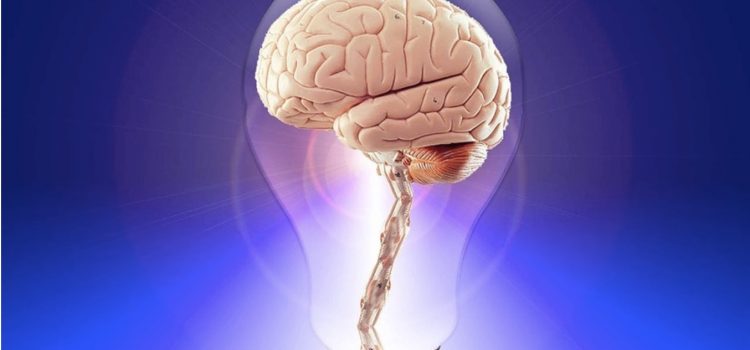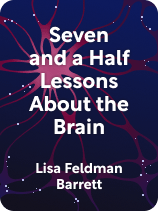

This article is an excerpt from the Shortform book guide to "Seven and a Half Lessons About the Brain" by Lisa Feldman Barrett. Shortform has the world's best summaries and analyses of books you should be reading.
Like this article? Sign up for a free trial here.
What is allostasis? How does allostasis impact your sensory experience?
Allostasis is the process where your body responds to stressors. In Seven and a Half Lessons About the Brain, Lisa Feldmann Barrett argues that the brain’s most important job isn’t thinking, it’s allostasis.
Below we’ll look at how allostasis impacts the sensory system in the brain.
Allostasis Impacts Your Sensory Experience
Barrett says that your own sophisticated sensations and movements are also the result of your brain performing allostasis. What is allostasis? It refers to the process of managing the body’s energy budget so it can survive and reproduce. Your sensory experience is actually a combination of external data from your environment and internal data from inside your body. Your brain then combines this information with memories of similar situations to motivate you to make a change that helps manage the body’s energy budget.
For example, your brain senses heat from the sun on your skin (an external sensation) and a rise in your body temperature (an internal sensation), and it tells your body to produce sweat to regulate your temperature. Your brain has to make millions of reactions like these all day, and it has to do them efficiently to stay alive. If you spend too much time in the sun without drinking water and cooling your skin with sweat, you could die. So, Barrett argues, the pressure is on for your brain to make the right call quickly.
Barrett explains that this is where the third source of information comes into play: the brain’s memories of what you’ve done before when you encountered similar information. Before it fully processes the external and internal information it receives, it searches its memory for previous situations where the environment and your body felt similarly. It recalls what it did in that situation and triggers an action for today. This allows your brain to be one step ahead and make decisions quickly and efficiently.
All of this happens before the brain has time to contrast the real sensory data with the experience it created for you. Barrett says this is why you feel less thirsty immediately after drinking water, even though that water won’t reach your bloodstream until 20 minutes later. Your brain knows you’ll be satisfied in a little while, so it creates the experience of quenched thirst.
Help Your Brain Create More Manageable Sensations
Understanding how the brain creates your experiences can help you manage sensations better, especially challenging ones. We tend to think that when we hurt ourselves, like when you stub your toe, a message travels from your toe to the brain alerting it of the pain. However, it’s actually your brain noticing that you stubbed your toe and creating pain to alert you to what happened so you can ice it or avoid walking on it.
You can leverage this mechanism by “teaching” your brain what sensations to expect and whether to be concerned by them or not. For example, pregnant women who are preparing for labor are often taught to refer to pain during labor as intensity and contractions as surges so they can visualize the sensation in a less negative and more manageable way.
The Brain Can Make Mistakes—and Learn
Barrett says that, sometimes, the experience your brain constructs because of allostasis turns out to be inaccurate, so you perceive something different from reality. For example, let’s say your brain senses that the sun is down (an external sensation) and your energy is low (an internal sensation). When it compares that data to the historical data in its memory, it comes to the conclusion that you need to eat, so it signals your body to search for food. But the reality might be that you’re tired, not hungry.
However, the brain has the chance to realize it jumped to the incorrect conclusion by contrasting the experience it created with the sensory data. Barrett says that this is what we call learning: The brain makes a mistake, realizes it, and adjusts its database of historical data so it can make a better decision the next time it encounters similar information. By making an intentional effort to learn, you can help your brain make better decisions in the future. For example, if you notice that you eat a snack every day right before bedtime, it might be a good idea to check whether you’re actually just tired. Instead of reaching for food, you might need to just go to bed.
How to Teach Your Brain
It’s easy to become trapped in the decisions your brain makes automatically. To avoid getting trapped in incorrect patterns of behavior and help your brain learn, there are two strategies you can deploy: reflection and visualization.
Reflection: Observe your actions and decisions as impartially as possible. Ask yourself why you reacted the way you did and whether you skipped over important information that might have been useful. For example, imagine that you regularly get upset with a coworker but aren’t sure why. By reflecting, you might notice that the coworker reminds you of someone else, and that memory is triggering your negative reactions rather than what the coworker does.
Visualization: When you notice a pattern you want to change, use visualization to train your brain to follow a different pattern. For example, through visualization, you can walk your brain through different situations with that coworker where, instead of getting upset, you remind yourself of why you’re feeling triggered and pause before reacting. Then, when you face the coworker again, your brain will be trained to react in a different way.

———End of Preview———
Like what you just read? Read the rest of the world's best book summary and analysis of Lisa Feldman Barrett's "Seven and a Half Lessons About the Brain" at Shortform.
Here's what you'll find in our full Seven and a Half Lessons About the Brain summary:
- How the human brain develops and operates
- Why the brain isn't organized in the way you thought it was
- How brains collaborate with one another






